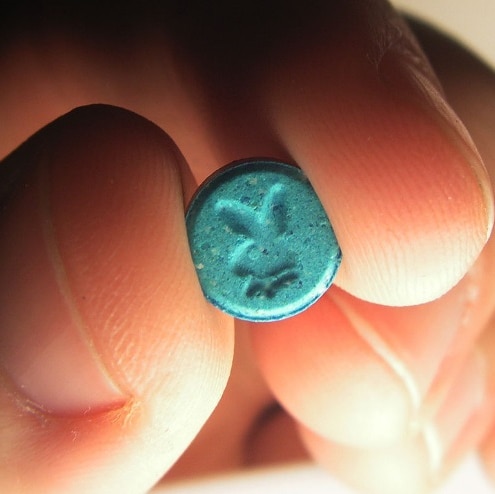Ecstasy, The Chemistry of MDMA: How It Works in the Brain, MDMA, or 3,4-methylenedioxymethamphetamine, is a synthetic drug that acts as a stimulant and hallucinogen. At the molecular level, MDMA is structurally similar to both methamphetamine and mescaline, giving it unique properties that affect the brain in profound ways. When ingested, MDMA quickly enters the bloodstream and crosses the blood-brain barrier, enabling it to interact directly with neurons. The primary action of MDMA is on three key neurotransmitters: serotonin, dopamine, and norepinephrine. These chemicals are crucial for regulating mood, pleasure, and energy levels.
The most significant impact of MDMA is on the serotonin system. MDMA causes a massive release of serotonin from storage sites in neurons, leading to a surge in serotonin levels in the brain. This flood of serotonin contributes to the feelings of euphoria, emotional warmth, and enhanced sensory perception that users experience. Additionally, MDMA inhibits the reuptake of serotonin, prolonging its effects and intensifying the overall experience. Dopamine and norepinephrine also play roles, with dopamine contributing to the drug’s reinforcing properties and norepinephrine increasing heart rate and energy levels. Ecstasy
Beyond these primary effects, MDMA interacts with other brain systems, including the oxytocin and vasopressin pathways. Oxytocin, often referred to as the “love hormone,” is associated with social bonding and trust. MDMA’s ability to increase oxytocin levels is thought to enhance feelings of empathy and connection with others. Vasopressin, similarly, is involved in social behaviors and hydration regulation. Together, these interactions create the complex and multifaceted experience that MDMA users report, a mix of physical, emotional, and perceptual changes that define the essence of ecstasy. cookies carts
The Effects of MDMA: What Users Experience, The allure of MDMA lies in its profound and often transformative effects on the user. Upon ingestion, the onset of MDMA’s effects typically begins within 30 to 45 minutes, peaking at around 60 to 90 minutes. Users describe a wave of euphoria, characterized by intense feelings of happiness, emotional warmth, and a sense of well-being. This initial rush is often accompanied by heightened sensory perceptions, where lights seem brighter, colors more vivid, and music feels deeply immersive.
One of the most notable effects of MDMA is its ability to enhance social and emotional connections. Users often report feeling a deep sense of empathy and understanding towards others, making social interactions more meaningful and enjoyable. This empathogenic quality is particularly valued in social settings like raves and festivals, where the communal atmosphere is amplified by the drug’s effects. Conversations become more engaging, physical touch feels more intimate, and the overall sense of connection is profoundly enhanced. Ecstasy
Beyond the emotional and social effects, MDMA also produces various physical sensations. Users may experience increased energy and stamina, making prolonged dancing or physical activity more enjoyable. Some report tactile sensations, such as tingling or chills, that add to the overall sensory experience. However, these pleasurable effects are often accompanied by less desirable side effects, such as jaw clenching, muscle tension, and increased body temperature. Understanding these diverse effects helps to appreciate the complex and multifaceted nature of the MDMA experience.
Harm Reduction Strategies for MDMA Users, Given the risks associated with MDMA use, harm reduction strategies are essential to minimize potential harm and ensure safer experiences. One of the most crucial aspects of harm reduction is education. Users should be informed about the effects of MDMA, including its potential side effects and risks. Understanding the importance of moderation, hydration, and breaks can help prevent serious complications like hyperthermia and dehydration.
Testing the purity of MDMA is another vital harm reduction practice. The illegal status of MDMA means that it is often produced and distributed without regulation, leading to variability in purity and the presence of harmful adulterants. Reagent test kits can help users identify the presence of MDMA and detect common contaminants, such as PMA (paramethoxyamphetamine), which poses significant health risks. Using these kits can reduce the likelihood of consuming dangerous substances and ensure a safer experience. triptorelin (gnrh) injectable for sale
Creating a supportive and safe environment is also crucial for harm reduction. MDMA’s effects can be intense and overwhelming, so having trusted friends and a comfortable setting can enhance the experience and provide support if needed. Users should also be aware of their own physical and mental state before taking MDMA, avoiding use if they are feeling unwell or emotionally unstable. By adopting these harm reduction strategies, users can enjoy the benefits of MDMA while minimizing potential risks.

